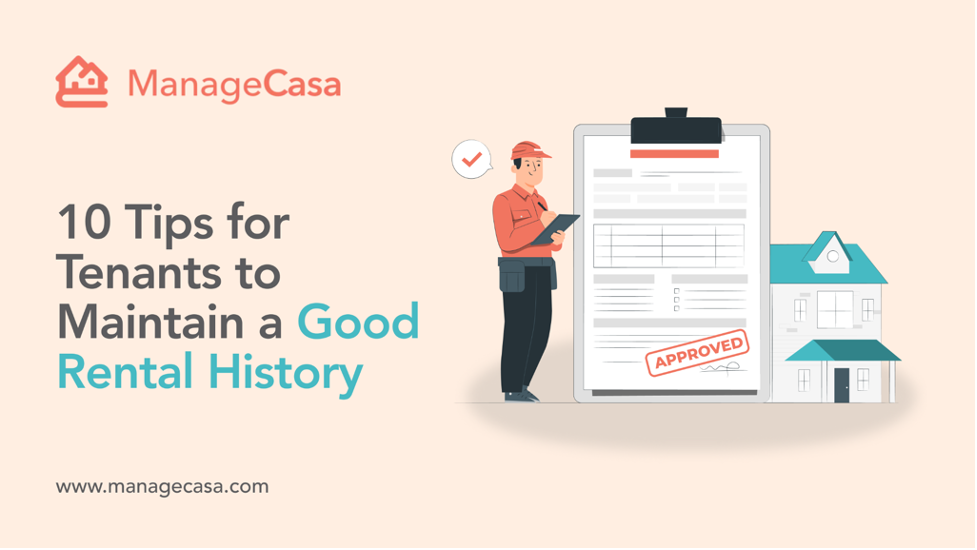Some HOA communities look like picture-perfect postcards while others... well, don’t.
The secret often lies in a dedicated group of individuals who wield the power of green thumbs and strategic planning: the HOA landscape committee.
Landscaping is crucial in shaping the aesthetics and overall appeal of any Homeowners Association (HOA) community. Well-maintained outdoor spaces enhance the neighborhood’s beauty and contribute to higher property values and an improved quality of life for residents. Considering that the landscaping services industry is expected to reach $153 billion in 2024, it’s clear that investing in HOA landscape maintenance is a matter of appearance and financial value for the community.
Many HOAs establish a landscape committee to ensure these outdoor spaces are consistently attractive, functional, and reflect the community’s values. This dedicated group is essential in maintaining the landscape’s integrity while balancing the residents’ needs and preferences. So, if your HOA plans to carry out a committee, this blog is for you!
Getting to Know Your HOA Landscape Committee
An HOA landscape committee is a specialized group within the association that focuses on managing and maintaining the community’s outdoor spaces. Its primary purpose is to oversee all landscaping-related activities, ensuring that the neighborhood’s green areas, parks, and communal gardens remain well-kept and aligned with the community’s aesthetic standards.
Composition of the Committee
The landscape committee typically comprises:
- Board members: Elected individuals who ensure the landscaping plan aligns with the community’s overall goals and HOA landscape rules and regulations.
- Volunteers: Passionate owners who contribute their time and expertise to improve the neighborhood’s green spaces.
- External advisors (optional): Sometimes, professionals such as landscape architects or contractors may be involved in offering expert advice on HOA landscaping contracts.
Ideal Qualities of Committee Members
An efficient HOA landscape committee member should possess a mix of skills and characteristics:
- Experience: Knowledge of landscaping or property management is valuable, though not mandatory. Passion for maintaining beautiful spaces is critical.
- Research skills: Committee members should be able to assess potential landscaping solutions and stay current on best practices.
- Communication: They must liaise with the HOA board, landscapers, and owners (and or residents), facilitating smooth exchanges of information and ideas.
- Decision-making ability: Members should be adept at balancing landscaping projects’ aesthetic and financial aspects while respecting community input.
Why is a Landscape Committee Important?
An HOA landscape committee is essential for ensuring that landscaping responsibilities are managed efficiently and effectively. Considering the industry saw a 15.7% growth in 2023, it’s evident that this industry is there to assist your landscaping committee to make your community greener.
A committee has several responsibilities in addition to hiring, overseeing, suggesting, and maintaining the landscape of your community. On top of that, a committee also helps with the following:
- Setting Up Clear Communication Channels: The landscape committee is the point of contact between owners (or residents) and landscaping companies, ensuring that concerns are addressed swiftly and expectations are communicated clearly.
- Providing Efficient Issue Resolution: Whether it’s a fallen tree, overgrown bushes, or requests for new plants, the committee handles these concerns efficiently, streamlining processes and resolving issues before they escalate.
- Having Increased Accountability: Accountability has improved by assigning a specific group to oversee landscaping tasks. The committee ensures that all projects meet the community’s standards and are completed on time and within budget.
Responsibilities of an HOA Landscape Committee
An HOA landscape committee has several critical responsibilities that directly impact the appearance and maintenance of the community’s outdoor areas. Some of these key responsibilities include:
- Creating and Managing Landscaping Budgets: The committee is responsible for drafting a budget that covers all landscaping expenses, from routine maintenance to new projects.
- Soliciting and Reviewing Bids from Landscaping Companies: Given the median revenue per customer in the industry is $16,413, selecting the right partner is critical for your HOA’s financial health. The committee must review bids to ensure that the chosen landscaper provides the best mix of quality and price.
- Communicating Preferences to Landscapers: The committee bridges the gap between owners’ desires and landscapers’ work, ensuring that outdoor spaces reflect the community’s tastes and functional needs.
- Addressing Owners’ Concerns: From requests for additional greenery to complaints about unsightly common areas, the committee ensures that all owners’ (or residents’) feedback is considered and addressed.
- Overseeing Landscaping Plans: The committee monitors the implementation of landscaping plans, ensuring that projects are executed to the community’s standards and within the agreed timeframe.
- Ensuring Compliance with HOA Guidelines: Every community has specific rules about landscaping, and the committee must ensure that landscapers, owners, and residents follow these guidelines.
The upcoming section speaks broadly to HOA grounds maintenance, with detailed breakdowns of how to handle the grounds’ maintenance responsibilities.
HOA Landscape Maintenance Best Practices

Maintaining landscape in an HOA community requires strategic planning, routine upkeep, and collaboration with landscaping professionals to ensure attractive, functional outdoor spaces.
Here’s a condensed guide to effective landscape maintenance:
1. Establish a Maintenance Schedule
Routine tasks like lawn care, pruning, and weed control are essential to prevent small issues from escalating. Remember, even minor oversights in maintenance can contribute to long-term problems, as seen in how poor drainage or erosion can lead to costly repairs.
Create a year-round schedule with your landscaper for tasks such as:
- Lawn care: Mowing, fertilizing, and aerating based on season.
- Pruning and trimming: Regularly maintain trees and shrubs.
- Weed control: Use manual and chemical methods as needed.
- Mulching and seasonal plantings: Regularly refresh mulch and plant flowers to enhance curb appeal.
2. Adopt Sustainable Practices
Sustainability is more than a trend—80% of gardeners plan to continue investing in eco-friendly gardening. Practices like xeriscaping and smart irrigation systems are good for the environment and help reduce water usage and overall landscaping costs for the community.
Incorporate eco-friendly strategies:
- Xeriscaping: Use drought-tolerant plants to conserve water.
- Efficient irrigation: Install smart systems to reduce water waste.
- Composting: Use organic fertilizers to improve soil health.
3. Conduct Regular Inspections
Regular inspections ensure that pest control, irrigation systems, and drainage issues are addressed promptly. Given the growth of container gardening, especially among 34-45-year-olds, keeping up with trends like this can help cater to owners’ evolving preferences.
Monitor common areas to detect issues early:
- Pest control: Check for signs of infestation and address immediately.
- Irrigation systems: Ensure sprinklers and drains are working efficiently.
- Drainage and erosion: Fix any areas of poor drainage or erosion to prevent long-term damage.
4. Create Clear Communication Channels
Facilitate smooth communication between owners, the committee, and landscapers:
- Respond promptly to the owner’s (or resident’s) feedback.
- Hold regular meetings with landscapers to assess progress.
- Provide community updates on landscaping projects.
5. Budget for Maintenance
Effective landscaping requires careful financial planning. A well-maintained landscape doesn’t just happen—it results from consistent upkeep, repairs, and improvements. Allocating a proper budget ensures that all routine and unexpected landscaping tasks are covered, preventing delays or unfinished projects due to lack of funding.
Your committee may plan an annual budget for the following:
- Routine tasks like mowing, trimming, and planting.
- Repairs to irrigation, replacements, and unforeseen needs.
- Upgrades for aesthetic and functional improvements.
6. Adapt to Seasonal Needs
Landscaping is a year-round responsibility, but each season brings its own set of challenges. Recognizing these seasonal demands helps keep the community’s outdoor spaces in optimal condition throughout the year. Adapting your maintenance plan based on weather patterns and plant growth cycles ensures that your landscaping efforts are timely and effective.
Here’s how your HOA landscape maintenance committee can accommodate to seasonal changes:
- Spring: Refresh flower beds, fertilize lawns, and prune early bloomers.
- Summer: Increase watering and mowing during peak growth.
- Fall: Clean up leaves, overseed lawns, and plant trees.
- Winter: Prune trees and clear debris, preparing for next spring.
7. Encourage Owner/Resident Involvement
A community’s landscaping efforts are most successful when residents feel engaged and take pride in their shared spaces. Involving owners and residents in maintenance activities fosters a sense of ownership and responsibility for the community’s outdoor areas. This also provides an opportunity to educate on sustainable practices and create a unified vision for the landscape.
Engage residents through:
- Clean-up days to help maintain common areas.
- Garden clubs and workshops to educate on sustainable practices.
- Community activities that promote pride in shared spaces.
Effective landscape maintenance in an HOA involves a proactive approach, clear communication, and sustainable practices. With a well-executed plan, the landscape committee can maintain beautiful, functional spaces that enhance property values and community satisfaction.
4 Tips for Finding the Right Landscaping Partner
Selecting the right landscaping company is one of the most important decisions an HOA landscape committee makes. The landscaping industry employs over 1 million people across 661,000 businesses, so choosing a partner can significantly affect your community’s outdoor appeal.
Tip 1: Experience with HOA Communities
Choosing a company familiar with the unique challenges and expectations of managing landscaping in HOA communities is crucial.
Tip 2: Strong Communication and Customer Service Skills
A responsive and communicative landscaper will ensure smooth collaboration and will be more likely to meet the community’s expectations.
Tip 3: Knowledge of Local Climate and Plant Life
A landscaping company that understands the local environment can recommend the best plants and materials to thrive in your community’s conditions.
Tip 4: Sustainability and Environmental Practices: Given the increasing focus on eco-friendly living, it’s important to find a partner that values sustainable practices, such as water conservation, using native plants, and limiting chemical use.
A successful HOA landscape committee is the cornerstone of maintaining an attractive, functional, and sustainable community environment. By following the best practices outlined above—such as selecting the right landscaping partner, managing budgets, and ensuring compliance with community standards—your committee can help create outdoor spaces that residents and owners love and elevate property values.
As you may have realized, HOA landscape maintenance and management are not tasks for the faint of heart. However, finding the right board members who can balance the relationship between your landscaping company and your community's needs makes the work much more manageable. While your HOA board handles the heavy lifting, let ManageCasa take care of the rest of your community’s responsibilities.
HOA Landscaping Committee Management Made Easy with ManageCasa

At ManageCasa, we understand the many hats you wear when managing an HOA, and our platform is designed to help you tackle multiple responsibilities seamlessly. Whether your HOA needs to conduct an anonymous survey, address a maintenance issue, or remind residents about their dues, our platform handles it with just a few simple taps. Additionally, when you bring in a landscaping company to beautify your community, we make it easy to streamline their tasks and provide real-time access to stakeholders.
Here’s why you should entrust ManageCasa with managing your HOA community:
- Streamlined Administration
- Financial Tools
- Maintenance and Operations
- Communication Channels
- Reporting and Analytics
So what are you waiting for? Book your FREE Demo Today and see how we can help you easily manage your HOA landscape committee and community!


